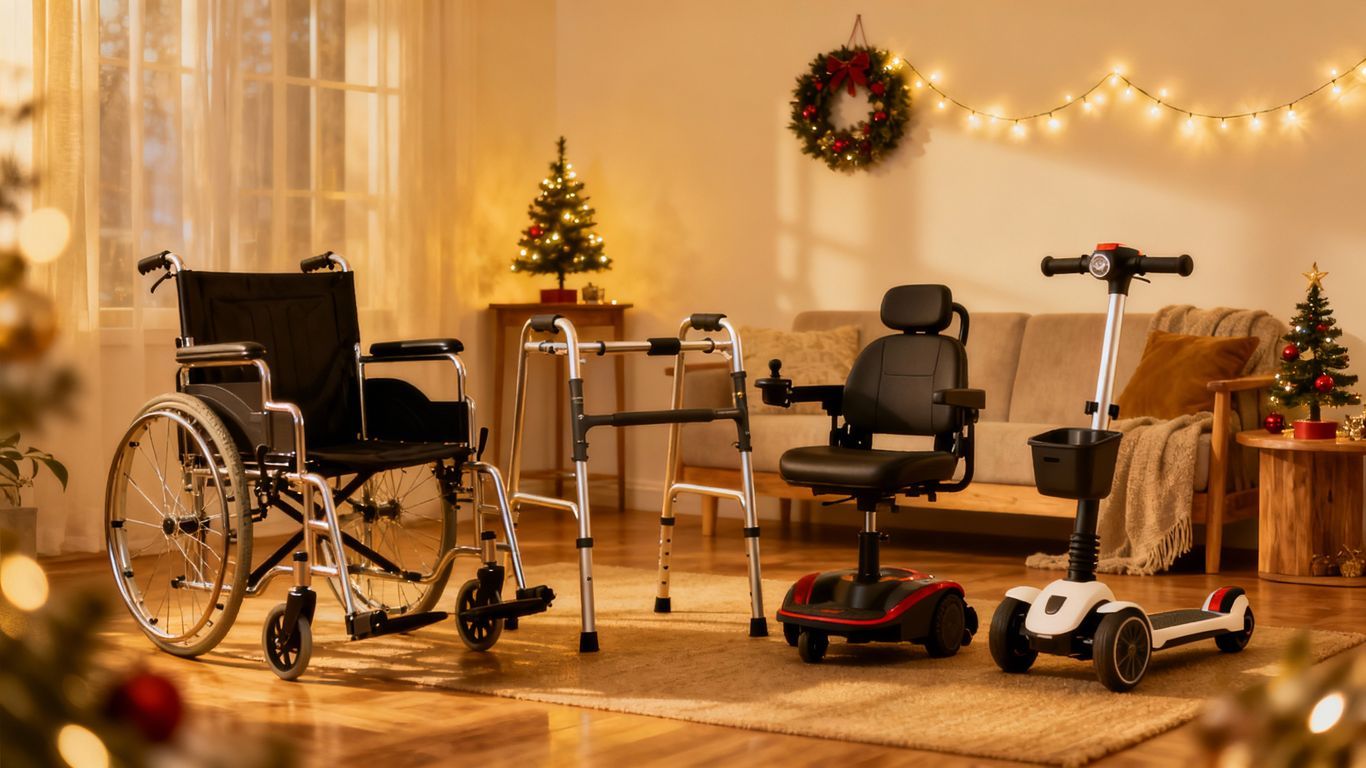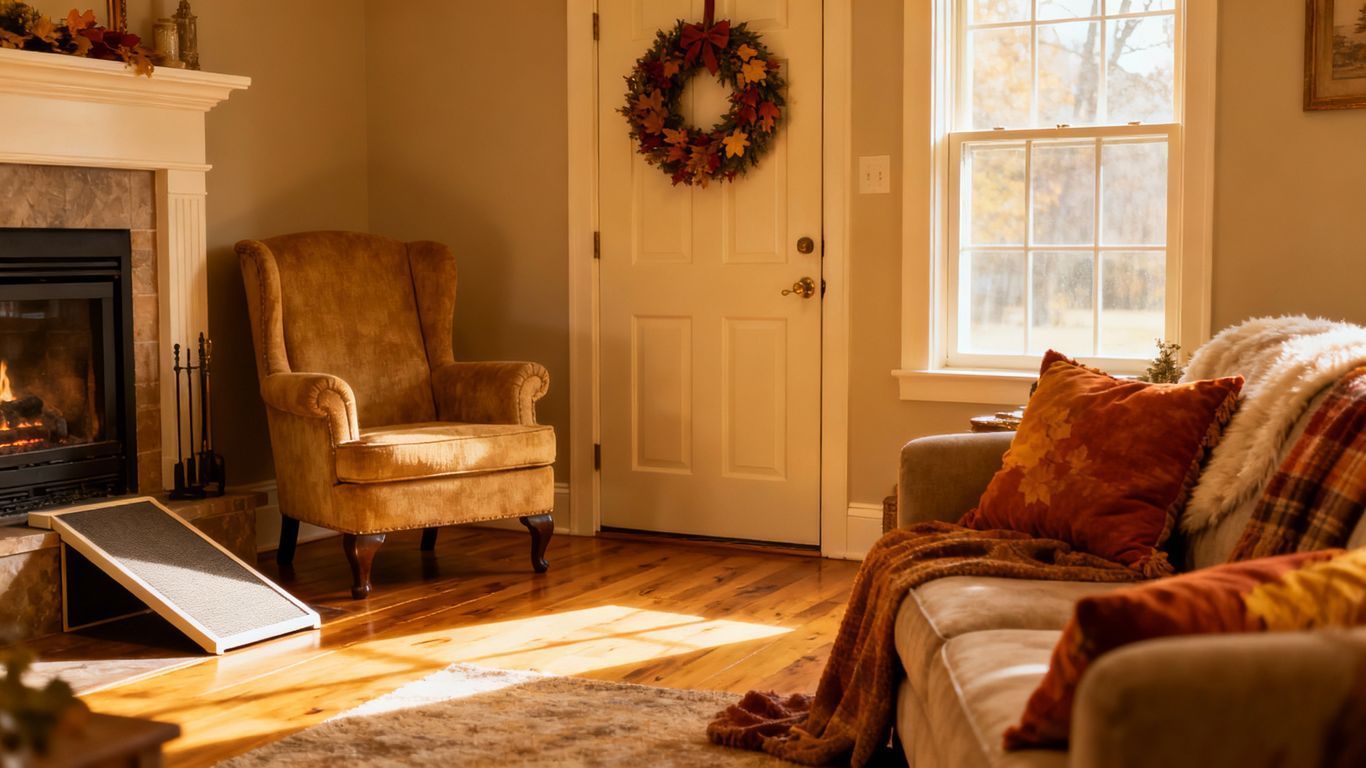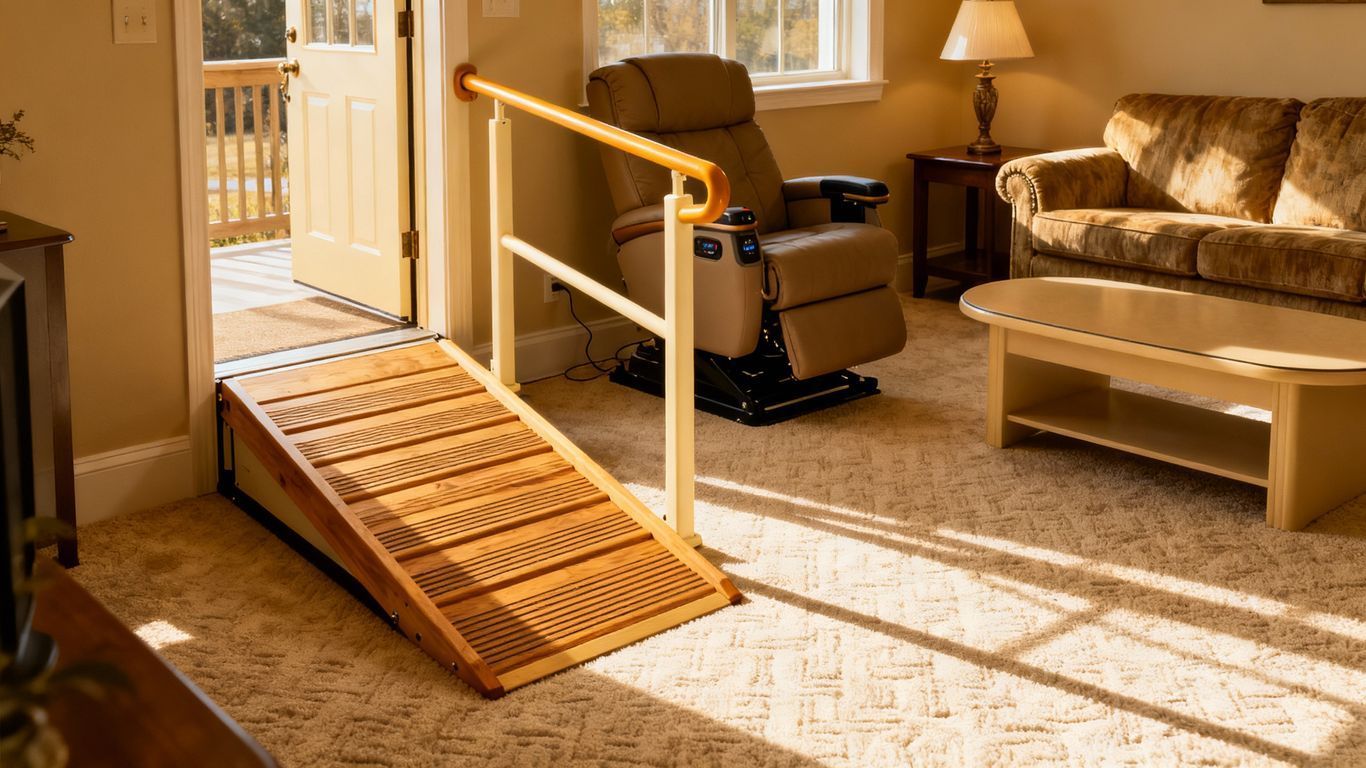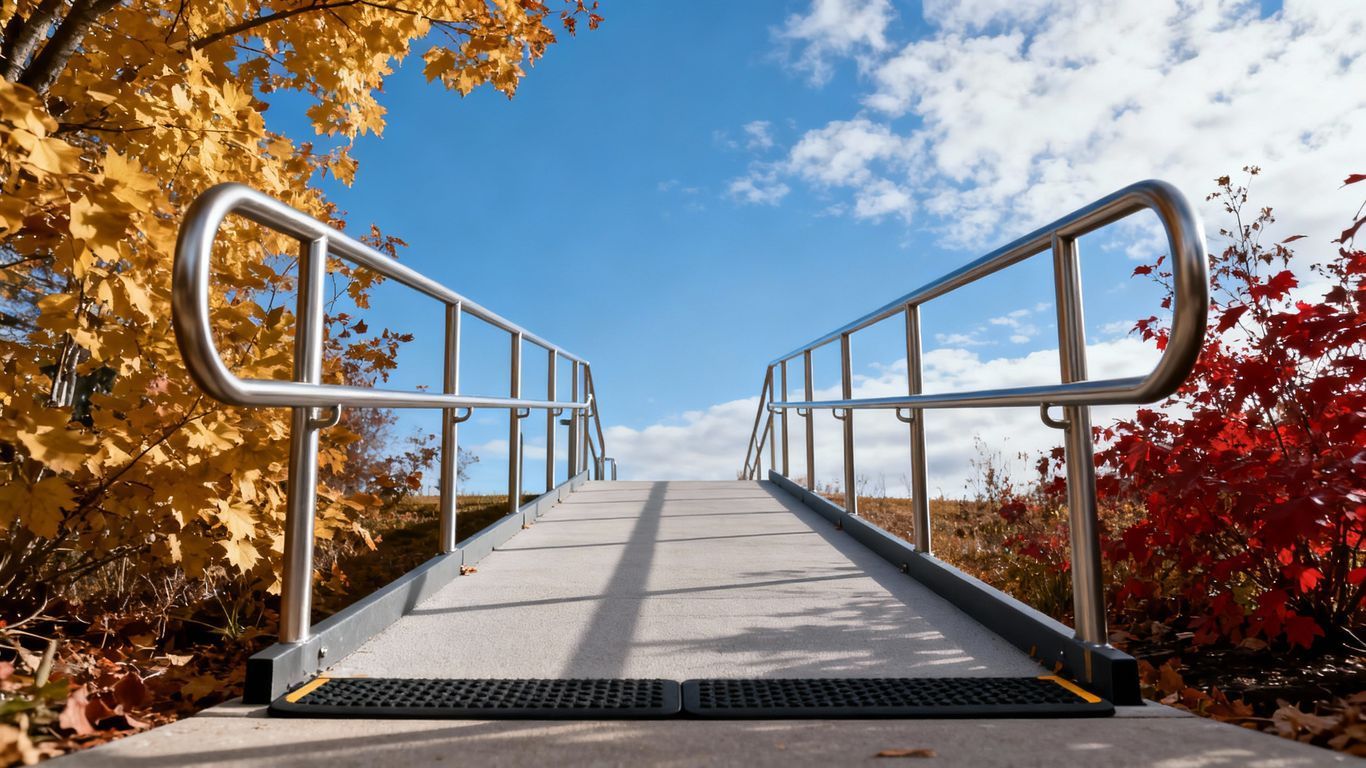Top 10 Mistakes Homeowners in North Georgia Make When Choosing an Accessibility Ramp (And How to Avoid Them)
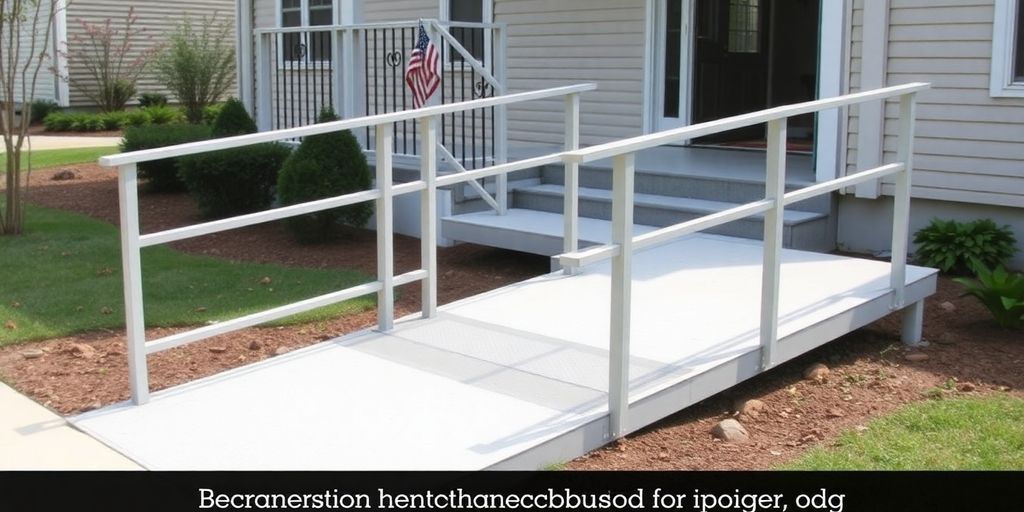
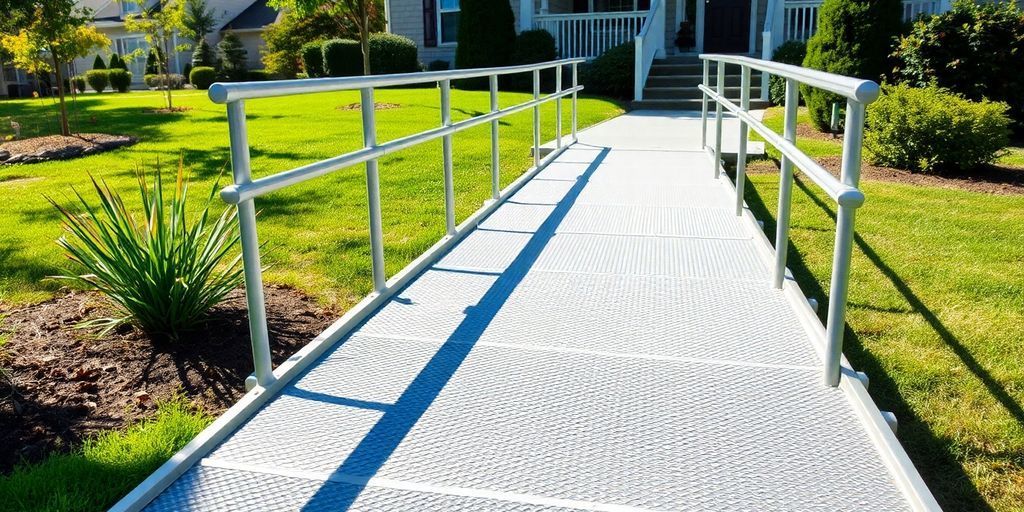
Choosing the right accessibility ramp can be a real challenge for homeowners in North Georgia. It’s not just about picking something that looks nice; there are lots of factors to consider. From local rules to materials and slope, making the wrong choice can lead to big headaches down the road. In this article, we’ll go over the top 10 mistakes people often make when selecting a mobility ramp and how you can steer clear of them. Let’s dive into some practical accessibility ramp tips to help you make the best decision for your home.
Key Takeaways
- Always check local regulations before installing an accessibility ramp.
- Choose durable materials that can handle weather changes in Georgia.
- Make sure the slope meets safety standards for easy access.
- Consider the weight capacity to ensure it supports all users safely.
- Plan for future needs to avoid having to replace the ramp later.
1. Ignoring Local Regulations
So, you're thinking about adding an accessibility ramp to your North Georgia home? Awesome! But before you start hammering away, let's talk about something that can really throw a wrench in your plans: local regulations. Ignoring these rules can lead to fines, delays, or even having to tear down your newly built ramp. Trust me, it's happened to others.
Think of it this way:
- Zoning laws dictate where you can build on your property.
- Building codes specify how things need to be constructed for safety.
- Permitting processes are there to ensure everything is up to snuff.
It's easy to get caught up in the excitement of improving accessibility, but taking the time to research and comply with local regulations is a must. It's better to be safe than sorry, and it can save you a lot of headaches (and money) in the long run.
Don't just assume you can build whatever you want, wherever you want. Research is key. Call your local city hall or county planning department. Ask about permits, setbacks, and any specific requirements for accessibility ramps. It might seem like a pain, but it's a crucial step in making sure your project goes smoothly.
2. Choosing the Wrong Material
Picking the wrong material for your accessibility ramp can lead to a whole host of problems down the road. It's not just about looks; it's about safety, durability, and how well the ramp holds up to North Georgia's weather. Think carefully about what you need before making a decision.
There are a few things to keep in mind:
- Aluminum is a popular choice because it's lightweight and doesn't rust easily. Aluminum ramps are great if you need something you can move around, but they can get slippery when wet.
- Wood ramps can look nice and blend in with your home's exterior, but they require regular maintenance to prevent rot and decay. Plus, they can become slick when it rains or snows.
- Concrete ramps are super durable and can handle a lot of weight, but they're permanent and can be expensive to install. They also don't exactly scream "welcome home."
Consider the long-term costs and maintenance requirements of each material. A cheaper material upfront might end up costing you more in repairs and upkeep over time. Think about how the material will hold up to the sun, rain, and temperature changes we get here in North Georgia.
Ultimately, the best material depends on your specific needs and budget. Don't rush into a decision without doing your homework.
3. Underestimating Slope Requirements
One of the biggest mistakes I see folks make is not paying close enough attention to the slope of their ramp. It's easy to think, "Oh, a little incline won't hurt," but trust me, it can make a huge difference in how easy (or difficult) the ramp is to use. Getting the slope wrong can make the ramp unsafe and even unusable.
Here's what you need to keep in mind:
- ADA guidelines: The Americans with Disabilities Act (ADA) has specific guidelines for ramp slopes. Generally, it's a 1:12 ratio, meaning for every inch of rise, you need 12 inches of ramp length. Don't ignore edge protection on shorter ramps.
- User strength: Consider the strength and abilities of the person using the ramp. A steeper slope might be manageable for someone with good upper body strength, but impossible for someone with limited mobility.
- Ramp length: A shallower slope requires a longer ramp. Make sure you have enough space in your yard to accommodate the necessary length.
It's always better to err on the side of caution and make the slope as gentle as possible. A slightly longer ramp is much better than a ramp that's too steep and dangerous to use. Think about how the ramp will be used in different weather conditions, too. A steep ramp can become treacherous in the rain or snow.
4. Failing to Consider Weight Capacity
It's easy to get caught up in the dimensions and slope of a ramp, but one of the biggest mistakes homeowners make is forgetting about weight capacity. This isn't just about the person using the ramp; it's about everything they might be carrying or using to assist them.
Think about these factors:
- The weight of the wheelchair or scooter itself.
- Any groceries, packages, or other items being carried.
- Potential for multiple people on the ramp at once (even if infrequent).
A ramp that's rated too low can lead to serious accidents and injuries. It's always better to overestimate than underestimate. Consider future needs as well; a heavier power wheelchair might be in the cards down the road.
It's also important to consider the ADA compliant lift weight capacity. Don't forget to factor in the weight of any caregivers who might be assisting. A little extra headroom in the weight rating can provide peace of mind and ensure the ramp remains safe and reliable for years to come.
5. Overlooking Weather Resistance
Okay, so you've got your ramp picked out, and it looks great. But have you thought about what happens when it rains, snows, or the Georgia sun beats down on it all day? Weather can really do a number on accessibility ramps if you're not careful. It's not just about comfort; it's about safety and how long your ramp will last.
Think about these things:
- Moisture can cause wood to rot and metal to rust. That's a recipe for disaster, especially if someone is relying on the ramp for mobility.
- The sun can fade colors and even warp some materials over time. Nobody wants a ramp that looks like it's been through a war after just a couple of years.
- Temperature changes can cause materials to expand and contract, which can lead to cracks and other damage.
Choosing the right material is key. Some materials hold up way better than others in different climates. For example, if you live in an area with a lot of snow and ice, you'll want a material that can withstand freezing temperatures and won't become slippery. If you're in a hot, sunny area, you'll want something that won't fade or warp easily.
Consider these points when selecting your ramp:
- Look for materials that are specifically designed for outdoor use. They'll have special coatings or treatments to protect them from the elements.
- Think about the ADA-compliant concrete ramps and stairs. Concrete is a great option because it's super durable and can withstand just about anything Mother Nature throws at it.
- Regular maintenance can go a long way. Cleaning your ramp regularly and applying protective coatings can help it last longer and stay in good condition.
6. Neglecting Sufficient Width
Okay, so you're building a ramp. Awesome! But have you thought about how wide it needs to be? It's easy to focus on the length and slope, but width is super important too. Not having enough space can make the ramp unusable, or at least really uncomfortable.
Think about it. You need enough room for the user and anyone assisting them. Plus, what if they're carrying something? A narrow ramp can quickly become a hazard.
Here's what to keep in mind:
- Wheelchair Size: Different wheelchairs have different widths. Make sure your ramp can accommodate the widest chair that might use it.
- Turning Space: If the ramp has turns, you'll need extra width for maneuvering. Tight turns on a narrow ramp are a recipe for disaster.
- Assistive Devices: Walkers, crutches, and other devices need space too. Don't forget to factor them in.
A good rule of thumb is to aim for a ramp that's wider than you think you need. It's better to have extra space than to feel cramped and unsafe. Plus, it makes the ramp more versatile for different users and situations.
Also, remember that modular ramp systems are often recommended for longer ramps, and they come in various widths to suit your needs.
7. Skipping Safety Features
Okay, so you're saving a few bucks by cutting corners on safety? Big mistake. Seriously, this is where you don't want to skimp. We're talking about preventing falls and injuries, and that's way more important than saving a few dollars now. Safety features are non-negotiable when it comes to accessibility ramps.
Think about it. A ramp without proper safety measures is just an accident waiting to happen. Especially in North Georgia, where we get our fair share of rain and ice. You need to make sure that commercial ramps are up to par.
Here's what you absolutely need to consider:
- Handrails: Sturdy handrails are a must. They provide support and prevent falls, especially for people with limited mobility.
- Slip-Resistant Surface: Rain, ice, or even just a little bit of moisture can make a ramp treacherous. A slip-resistant surface is essential.
- Edge Protection: Curbs or edge protectors prevent wheelchairs and walkers from accidentally rolling off the side of the ramp.
Don't think of safety features as optional extras. They're an integral part of the ramp's design and function. Without them, you're putting yourself and others at risk. It's just not worth it.
8. Disregarding Aesthetic Integration
Okay, so you need a ramp. Functionality is key, obviously. But let's be real, nobody wants a ramp that looks like it belongs on a loading dock attached to their charming North Georgia home. Aesthetics matter! It's about blending the ramp into your existing landscape and architecture, not slapping something on that screams "medical device."
Here's what to think about:
- Material choices play a huge role. Wood can be stained to match your deck, while aluminum can be powder-coated in various colors. Concrete can be textured and colored to complement your existing hardscaping. Don't just go with the cheapest option without considering how it will look.
- Consider the landscaping around the ramp. Can you add plants or shrubs to soften the edges and make it feel more integrated? A little greenery can go a long way.
- Think about the ramp's placement. Is there a way to position it so it's less visually obtrusive? Maybe tuck it around the side of the house or use existing features to help it blend in.
Ignoring aesthetics can actually decrease your home's value. A poorly designed ramp can be a real eyesore, and potential buyers might see it as a negative. Spending a little extra time and effort to make it look good is an investment in your property.
It's also worth considering how the ramp impacts the overall flow of your yard. Does it block pathways or create awkward angles? A well-integrated ramp should feel like a natural extension of your home, not an afterthought. Think about how aesthetic design can improve the look of your home.
9. Not Planning for Future Needs
Okay, so you're getting a ramp. Awesome! But have you thought about, like, next year? Or five years from now? It's easy to focus on the immediate need, but things change. People change. Failing to consider future needs is a common mistake.
Think about these things:
- Will the user's mobility likely decrease? Will they need a wider ramp, or a different slope, in the future?
- Will other family members or visitors need to use the ramp? Consider their needs, too. Maybe someone uses a larger wheelchair or scooter.
- Will you need to move the ramp? A modular ramp design might be a better choice if you anticipate needing to relocate it.
It's better to over-prepare than under-prepare. A ramp is an investment, and you want it to last. Thinking ahead can save you money and hassle in the long run. Consider things like potential changes in the user's condition, or even if you might move to a new house and want to take the ramp with you.
10. Overcomplicating Design
Sometimes, less really is more. I've seen homeowners get so caught up in trying to make their accessibility ramp a statement piece that they end up with something impractical and, frankly, a bit of an eyesore. The primary goal is always accessibility and safety, not winning a design award.
It's easy to fall into the trap of adding unnecessary features or using overly complex materials. Keep it simple, folks. A straightforward design is often the most effective and cost-efficient.
Here are a few things to keep in mind to avoid overcomplicating your ramp design:
- Stick to basic materials: Pressure-treated wood or aluminum are reliable and easy to work with.
- Avoid unnecessary curves or angles: Straight ramps are generally easier to navigate and build.
- Focus on functionality over aesthetics: While it's nice to have a ramp that looks good, safety and accessibility should always come first.
Don't get bogged down in trying to reinvent the wheel. There are plenty of proven ramp designs out there that are both functional and aesthetically pleasing. Do your research, find a design that works for your needs and your property, and stick with it. Remember, the goal is to make your home more accessible, not to create a work of art.
Consider the overall look of your home. You want the ramp to blend in, not stick out like a sore thumb. Think about the color, the materials, and the overall style. A simple, understated design will often be the most effective way to achieve this. And remember to consider attic ventilation to keep your home energy efficient.
Sometimes, we make designs way too complicated. This can confuse people and make it hard for them to use what we create. Instead, try to keep things simple and clear. If you want to learn more about how to make your designs better, check out our website for tips and tricks!
Wrapping It Up
Choosing the right accessibility ramp can feel overwhelming, but it doesn't have to be. By avoiding the common mistakes we've talked about, you can make a smarter choice that fits your needs. Remember to think about the space you have, the materials you want, and how often you'll use it. Don't rush the decision—take your time to plan it out. If you need help, ask for advice from people who know what they're talking about. In the end, a good ramp can make a big difference in your daily life, so it's worth getting it right.
Frequently Asked Questions
What are local regulations for accessibility ramps in North Georgia?
Local rules can vary, but they usually include guidelines about the ramp's slope, width, and materials used to ensure safety and accessibility.
What materials are best for building a ramp?
Common materials include wood, aluminum, and concrete. Each has its pros and cons, so it’s important to choose one that fits your needs and budget.
How steep should my accessibility ramp be?
The slope should generally be 1:12, meaning for every inch of height, there should be at least 12 inches of ramp. This keeps it safe and easy to use.
How much weight can an accessibility ramp hold?
Most ramps should be able to support at least 600 pounds, but it’s best to check the specifications to ensure it meets your needs.
What do I need to consider for weather resistance?
Choose materials that can withstand rain and snow without rotting or becoming slippery. This keeps the ramp safe and long-lasting.
Why is the width of the ramp important?
A wider ramp allows for easier movement, especially for wheelchairs or walkers. It’s recommended to have at least 36 inches of width for comfort and safety.
